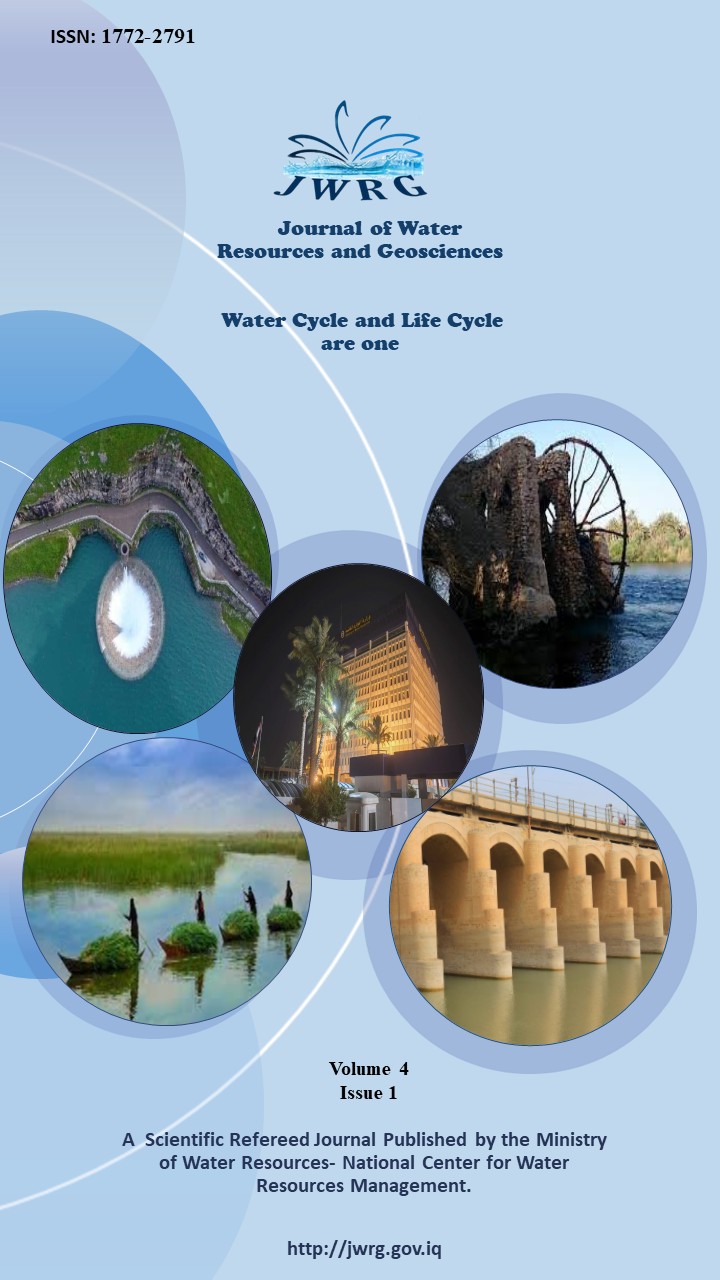The Effect of Water Discharge Rates on the Spread of Plastic Particles in the Shatt al-Arab River
Keywords:
plastic, fish, Shatt al-Arab, Ecological factors, Water drainageAbstract
From November 2021 to August 2022, water and fish samples were taken quarterly from four selected stations in the central part of the Shatt al-Arab River, several environmental parameters were collected. They include the temperature of water, water turbidity, dissolved oxygen, total suspended materials, and total dissolved solids. During the summer in Al-Baradiya, the highest water temperature was 31°C, water turbidity values ranged from 1-45 nephronic turbidity units, the highest total suspended solids value was 6 mg/l, and the highest total dissolved solids value was 22777 mg/l. During the winter, Al-Baradiya had the highest dissolved oxygen value of 6.5 mg/l. catch 377 Individuals of fish were caught, and they were dispersed among 15 species. At all study stations, the types of plastic extracted in the stomach of fish were divided into three types: fibers, fragments, and plastic films, with fibers being the dominant species at a percentage of 56% over the other types. The red color of the plastic predominated in the rest of the colors, the largest number of plastic waste was in the Dakir and Al-Ashar stations, at 43.40% of the total number of plastic. The effect of the lack of water reaching the Shatt al-Arab River during the year 2022 was detected in a clear increase in plastic particles in the river.
References
Al‐Essa, S. A. K. (2004). An Ecological study of the aquatic plants and epiphytic algae in Shatt Al‐Arab River. Ph.D. Thesis, College of Agriculture, University of Basra, 191p. (In Arabic).
Al-Mahmood, H.K.H., Hassan, W.F., Alhello, A., Hammond, O.I & Muhson, N.K. (2015). Impact of low discharge and drought on the water quality of the Shatt Al-Arab and Shatt Al-Basra rivers (south of Iraq). Journal. International. acad. Research, 3 (1),12-19.
Al-Zawar, A.M., Al-Shamary, A.Ch. & Hussain, N.A. (2023). Assessment of Ingested Plastic Particles in the Guts of Seventeen Fish Species from Shatt Al-Arab River. IOP Conf. Ser.: Earth Environment Science 1215 012015.
AOAC, (1984). Association of Official Alchemists. 14thed, Arlington, Virginia, USA, 1094p.
APHA, American Public Health Association (1999). Standard method for the examination of water and wastewater 20th edition, New York, (USA: American Public Health Association).
Eriksen, M., Lebreton, L.C.M., Carson, H.S., Thiel, M., Moore, C.J.,& Borerro, J.C.(2014) Plastic Pollution in the World’s Oceans: More than 5 Trillion Plastic Pieces Weighing over 250,000 Tons Afloat at Sea. PLoS ONE. 9(12):e111913. https://doi.org/10.1371/journal.pone.0111913
Forrest, A.K. and Hindell, M. (2018). Ingestion of plastic by fish destined for human consumption in remote South Pacific Islands. Aust. Journal Marit. Ocean Aff, 81-97.p.
Hamed, M., Soliman, H.A.M., Osman, A.G.M., & Sayed, A.-E.-D. (2020). Antioxidants and molecular damage in Nile Tilapia (Oreochromis niloticus) after exposure to microplastics. Environment Science Pollution Research 27, 14581e14588.
Islam, K.L. & Hossain, M.M., (1986). Effect of ship scrapping activities on the soil and sea environment in the coastal area of Chittagong, Bangladesh. Marine Pollution Bulletin 17, 462e463.
Kay, C. M., & Hoogenboom, O. (2018). Effects of microplastic exposure on the body condition and behavior of planktivorous reef fish (Acanthochromis polyacanthus). PLoS ONE 13(3): e0193308. https://doi.org/10.1371/journal.
Kuronuma, K. & Abe, Y. (1986). Fishes of the Arabian Gulf, Kuwait Institute for Scientific Research International Academic Printing Co. Ltd, Tokyo-japan,1- 356.
Kyork, S.A. (2016). Classification of Litter Pollutants in the Main Branches of Shatt Al-Arab River and the management. Mysan Research Journal.science. 12(24):71-86.
Lagarde, F., Olivier, O., Zanella, M., Daniel, P., Hiard, S., & Caruso, A. (2016). Microplastic interactions with freshwater microalgae: Hetero-aggregation and changes in plastic density appear strongly dependent on polymer type. Environmental Pollution 215, 331-339.
Löder, M.G.J., Kuczera, M., Mintenig, S., Lorenz, C., &Gerdts, G., (2015). Focal plane array detector-based micro-Fourier-transform infrared imaging for the analysis of microplastics in the environment. Environmental Pollution.277.
Martinez-Tavera, E. A.M., Duarte-Moro, S.B., Sujitha, P.F., Rodriguez-Espinosa, G.,& Rosano-Ortega, N. E., (2021). Microplastics and metal burdens in freshwater Tilapia (Oreochromis niloticus) of a metropolitan reservoir in Central Mexico: Potential threats for human health. Chemosphere. Journal homepage: 266. www.elsevier.com/locate/chemospher
Moyel, M.S & Hussain, N.A (2015). Water quality assessment of the Shatt Al-Arab River, Southern Iraq.Journal. Coast. life med, 3(6): 459-465.
Van Cauwenberghe, L., M. Claessens, M. B. Vandegehuchte, & C. R. Janssen. (2015). “Microplastics are Taken up by Mussels (Mytilus Edulis) and Lugworms (Arenicola Marina) Living in Natural Habitats.” Environmental Pollution 199: 10–17. doi:10.1016/j.envpol.2015.01.008.
Wicaksono, E.A., Werorilangi, S., Galloway, T.S. & Tahir,A.,(2021). Distribution and Seasonal Variation of Microplastics in Tallo River, Makassar, Eastern Indonesia Toxics, 2(9), 129p.


